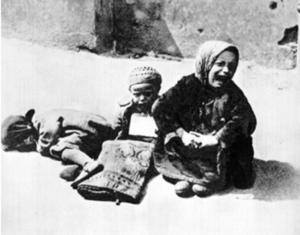Synthesis Reading Response: CRQ (Call-Response-Question)
What is it? The CRQ is a reading response assignment that asks you to first think critically about a reading, analyzing the author’s claim & evidence, and then make connections to other pieces we’ve read, seen, or heard.
Exercises
How do you format this response?
Start with The Call. The call is a quote or series of quotes that “call to you” from the page. Maybe the lines reveal something you find intriguing; maybe they reveal something you find challenging. Maybe you’re confused about how the lines fit into the writer’s reasoning, and you want to comment on that. Essentially, this line or series of lines calls to you.
Formatting the CALL: The call should not be more than three lines. If the lines are from various excerpts in the piece, integrate them into your own sentence. The call should be brief. Don’t forget about MLA in-text citations. Use this OWL Excelsior source for assistance with in-text citations: http://owl.excelsior.edu/posts/view/74
The Response: The response is analytical in nature. It is not a summary of what’s happened in the reading. Instead, your response examines the author’s claim & evidence, discussing what worked about the piece as a whole and what was problematic. The response should end with how this piece connects to something else we have read, heard, or seen. These connections will more than likely be based on similar themes and/or traits.
The Question: Because developing questions is so important to critical thinking, you want to end your response with a question that pushes this conversation forward. Why does this matter? What can it teach us? What would you need further research on to articulate a true position on this? Try to push those questions to be more than, “Do you agree with this?” These questions could be used for class discussion on this reading.
Examples
CRQ # 1- Image of Drowned Article
Student Name
Writing 102
14 September 2015
Call: “Once again it is not the sheer size of the catastrophe- millions upon millions forced by war and desperation to leave their homes-but a single tragedy that has clarified the moment”(Barnard & Shoumali).
Response: The photo of Aylan Kurdi’s tiny, lifeless body lying on the beach, floods you with all kinds of emotion. This particular photo captures a serious problem that many of us had turned our heads on. However, now we are forced to face it and see for ourselves how serious it is. The article reminded me of a study by Deborah Small, a Wharton marketing professor. “The researchers found that if organizations want to raise money for a charitable cause, it is far better to appeal to the heart than to the head”(Small).. The study showed that it is easier to feel a connection and sympathetic to an identifiable victim rather that millions of unnamed victim. The photo of little Aylan touched the hearts of all the mothers, fathers, and grandparents who have someone in their life like Aylan. It is another example of how, as the article says, “… forced Western nations to confront the consequence of a collective failure to help migrants fleeing the Middle East and Africa to Europe in search of hope, opportunity and safety” (Barnard& Shoumali).
The photo also reminded me of this photo of the children of the Holocaust. It also struck millions of people, and made nations around the world realize the horror that was happening across seas. It is hard to grasp the extent of the pain and suffering when it seems so far away. Our world seems to find it difficult to extend our “universal obligation” unless it is thrown in our faces.
Question: How important is the news media, especially photographers, in making us realize the extent of a global crisis?
Candela Citations
- Authored by: Amber Nichols-Buckley. Provided by: Department of Writing & Rhetoric, University of Mississippi . Located at: https://rhetoric.olemiss.edu/. License: CC BY: Attribution
